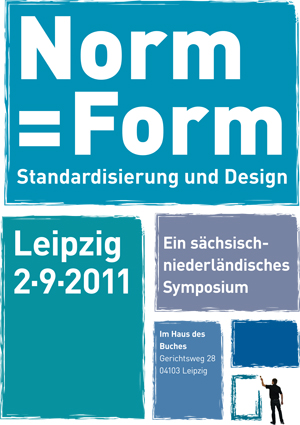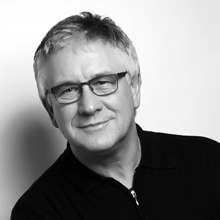Norm=Form. Standardisation and Design.
Much as we’d all like to believe product and furniture design is only about aesthetics and “form follows function”.
There’s also a bit of dull old bureaucracy involved.
Why do office swivel chairs have a five-foot base and not a four-foot base?
Why do all aircraft seat belts have the same fastening system?
Why can you plug your headphones into any portable device?
The answer is Norms, or Standards – guidelines that define how things should be constructed and tested.
Norms aren’t, generally, legally binding; however, in many market sectors “non-Norm” products have no commercial chance and for all serious producers following Norms is part of their assurance to customers that the products being offered for sale are safe and technically suitable for their intended purpose.
As such Norms are something design professionals can’t ignore.
On September 2nd a joint Dutch-German Symposium is being held in Leipzig looking at Norms and their role in creative industries, for example architecture, industrial design, graphic design or fashion design.
Ahead of the symposium we spoke to co-initiator Bernd Schröder from Schröder Design in Leipzig about Norms, the role they play in a designers daily life, and what they hope to achieve with the symposium. We started by asking about the history and background to Norms.
Bernd Schröder: The Norm as such exists almost since the dawn of time, but as the modern concept of technical norms since the industrial revolution and the start of mass industrialisation. The background idea being to help production by making everything standardised. A good example is measurements. Previously measurements were based on human comparisons so a foot or a cubit – and then came the original metre in Paris as the first standardised global measurement.
My favourite current example is the plug socket. Everywhere you go plug sockets are different. But when you consider electric vehicles, without the correct plug for each land I can’t take my electric car over borders. And so before we can go much further with electric autos we need to have a common plug. At least for charging cars.
(smow)blog: As an industrial designer where are do Norms most often play a role in your work?
Bernd Schröder: Mainly in terms of technical products, for example devices for measuring or analysing. But also in fashion, where all sizes are standardised.
(smow)blog: And when your designing, for example a new wheelchair, what comes first – the basic design or checking which Norms may eventually apply?
Bernd Schröder: That’s the balancing act. And you’ve always got to try to decide what is more important. I always try to complete the design first and then see what Norms apply. For example with a wheelchair an early thought would be how can I disinfect it. And so I need to make sure that the surfaces are non-pitted or have no other structures that could harbour harmful organisms.
(smow)blog: Are Norms helpful, or do they tend to get in the way of the creativity?
Bernd Schröder: Helpful, yes, because they make some decisions for you. When you know that you have to do this or that then that saves you a decision. But then again one always has this potential for conflict between creativity and institution.
(smow)blog: Turning to the Norm=Form symposium, what is the background?
Bernd Schröder: It really arose from private discussions on such topics, discussions that always tended to be more from a historical perspective. And with the symposium we now want to look forward. So what can the future bring? How can one as a designer or a creative person influence Norms. Not just passively deal with them, but also actively help create Norms.
(smow)blog: And what do you hope to achieve?
Bernd Schröder: Walter Gropius attempted to combine many disciplines in one school. We don’t want to compare the Symposium to Bauhaus, but would like to see a wide range of design fields – so from architecture, over fashion and graphic design and onto product design discuss the topic in an inter-disciplinary fashion: What can the one learn from the other? That’s the main aspect of the symposium. But it can only give an impulse, the process needs to be continued.
(smow)blog: Which brings us nicely to the next question, what is the next step?
Bernd Schröder: I think that it would be interesting to repeat the symposium with another country. This time we’re discussing with colleagues from Holland, but I can well imagine repeating it with, for example, Italy or Switzerland. The plan is definitely to have a second symposium in about 18 months. Every June there is an International Industrial Design Day and so we’re looking at June 2013 for a second symposium.
(smow)blog: Finally, and for the sake of completion before we go, how are things looking with the electric car plug?
Bernd Schröder: That has actually now been secured. And now that the plug has been decided upon we don’t need to have Norms for the batteries. The plug is decided, all the rest now is design!
“Norm=Form. Standardisation and Design” takes place in Leipzig on September 2nd 2011. Full details can be found at www.designdenhaag.eu/
Tagged with: Norm=Form

